Here we will see what are the different solutions to obtain chrome paint effects, simply, at home, with a paint gun, a brush, an airbrush, or even by dipping! But first, let's review some general information about what chrome paint really is and the different professional techniques that are practiced.
Chrome is an extremely hard and durable shiny metal with the element 'Cr', which produces a mirror-like effect: The feat of chrome paint is to allow you to see your own image perfectly reflected on its surface and to strongly reflect light. It is difficult to tell what the color of chrome really is, as it constantly reflects the colors of its surroundings.
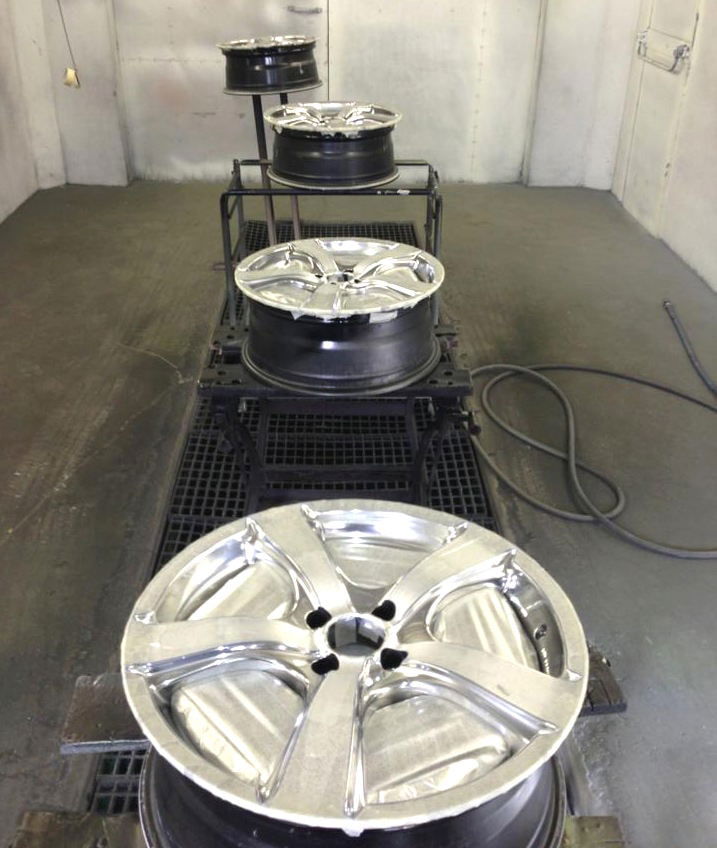
There Are Two Types Of Real Chrome:
We are not talking about chrome spray paint, but about the metal obtained by galvanization :
- the "hard chrome", which can be several millimeters thick, and which is mainly used for its anti-abrasion and anti-corrosion properties in industry, for example on pistons.
- Decorative chrome, which is the same extremely shiny and hard metal, but applied in an ultra-thin coat, usually on showerheads, car interiors, for example.
This chrome plating is obtained by a process called galvanization, with a metal bath and electrical voltage. Unlike chrome spray paint, the process is expensive and very toxic and is highly regulated. So this type of chrome effect is not available to everyone.
Chrome paint and other different techniques to obtain chrome effects
Be aware that all other processes, including chrome spray paint, are aluminum or silver based and do not involve carcinogenic elements such as Chromium VI.
There are essentially chemical and paint techniques that are safe.
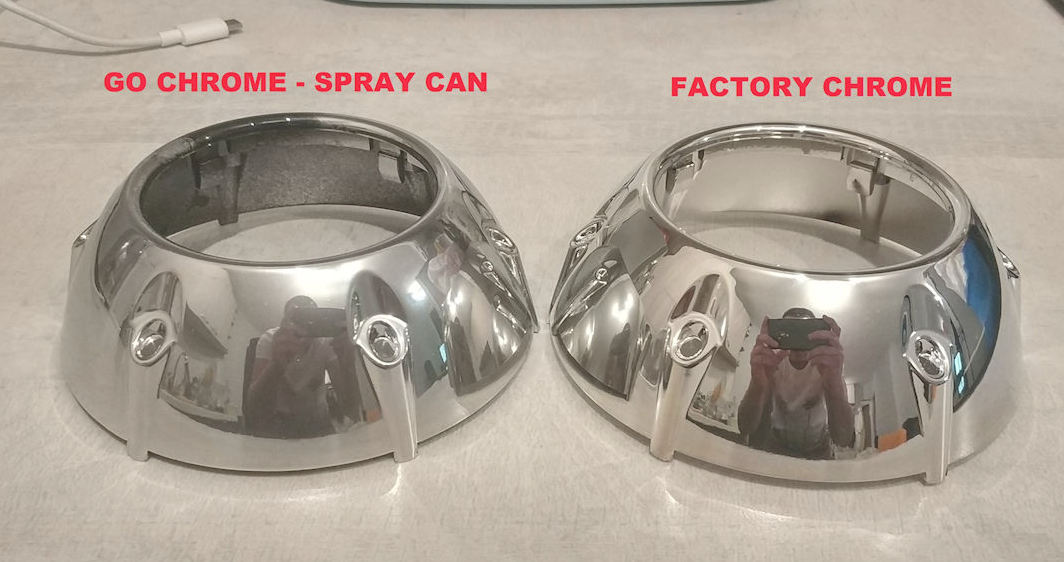
Chrome Spray Paint
There are mainly 2 types of Chrome in the can and spray very particular, and neither works like conventional paint.
These paints are composed of flat, perfectly shaped aluminum micro-particles designed to reflect like a mirror.
Chrome paints allow chrome finishes that range from satisfactory to excellent, reaching 70 to 90% chrome effect.
- The first, the professional chrome paint works by evaporation
It works in a succession of steps, applied with a spray gun, airbrush or aerosol, the first and most important of which is the application of an ultra shiny and hard undercoat. This paint evaporates to 99% and leaves a thin silver film. This paint can then be varnished to obtain a good resistance to liquids, abrasion, ... it is suitable for indoor or outdoor because it is not affected by UV
- the second is a "general public" paint called « leafing »
It is intended only for art and creative decoration. Its use is simplified to the extreme, with a single coat. Its application method is also miraculously simple, as it can be applied with a brush, spray, or airbrush or spray gun.
Which Simple And Accessible Chrome Plating Technique To Choose?
When you want to chrome an object, here are the questions to ask yourself to determine the best solution:
What tools do I have ? Airbrush ? Spray gun ?
Am I willing to use a complex multi-coating technique ?
Will the object be exposed to abrasion, water or touch, or simply hanging or out of reach of touch?
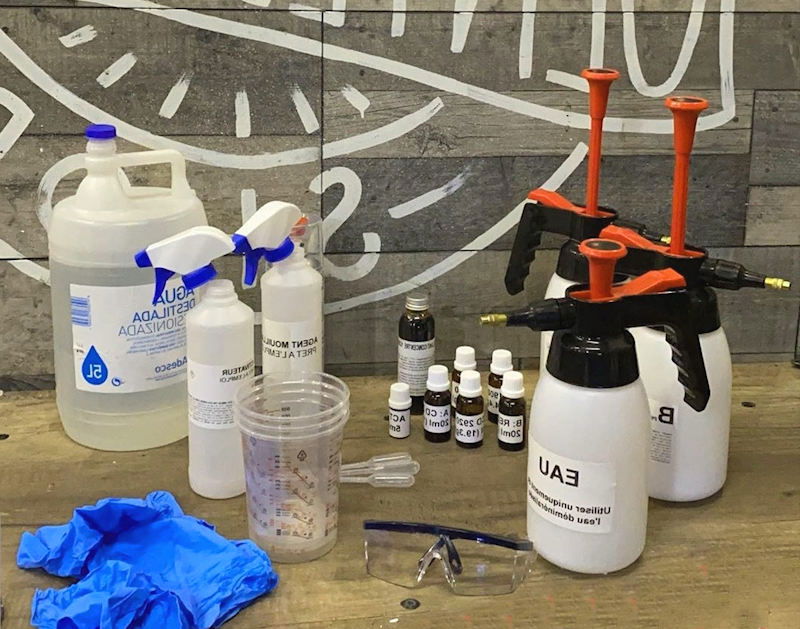
What Can Be Chromed, And With What Technique?
Headlight optics: Chrome or silver plating
Chairs, shower: professional chrome paint
Bike, bumper, rim: professional chrome paint
Chandelier, a trinket, a statue, a trophy: All types of paint
Model making: silver plating, or paints
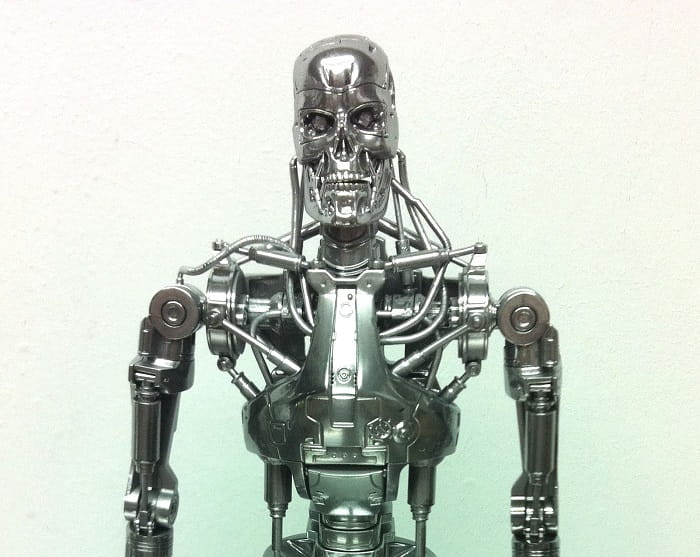
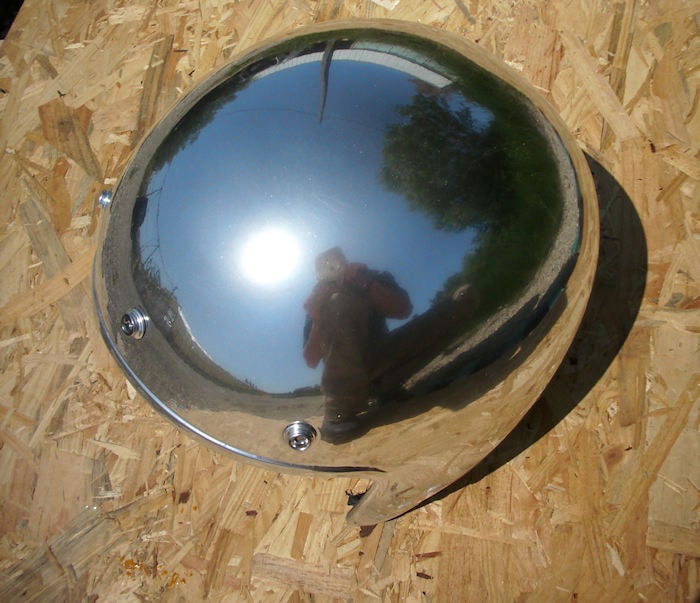
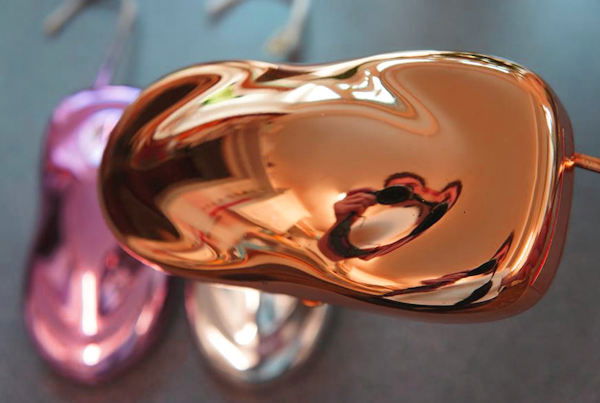
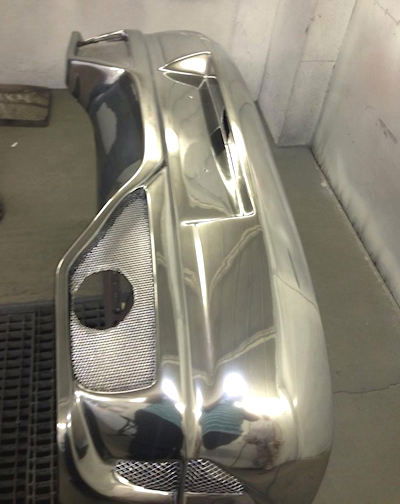
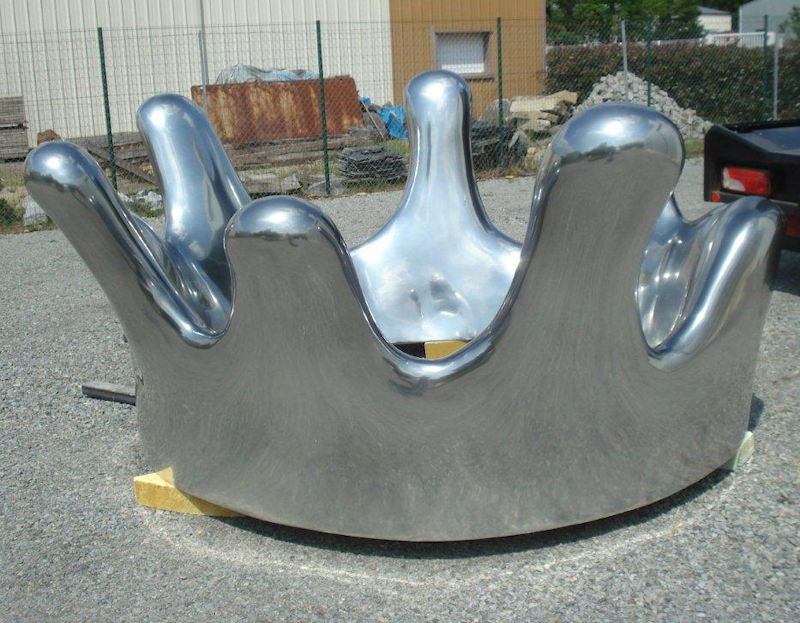
On Which Surfaces Can Chrome Paint Be Applied?
This is the great advantage of paints: they are also relatively easy to use. Moreover, whatever the size of the object, its shape, its material, it is always possible to paint it: We can paint any material, whether plaster, leather, wood, concrete, from the moment we have prepared* the surface properly.
Preparing means cleaning, sanding, dusting, priming...
Chrome Spray Paint: What Is It Worth?
Clearly, you should not trust the appearance of the cap, if the product comes from a supermarket or a non-specialized store : this cap is made by chrome plating, while the contents of the aerosol, has without a shadow of a doubt a simple metallic paint without real mirror effect.
The Most Convenient To Achieve…
This is the « leafing » paint described above, because no matter how it is applied and no matter what the type and condition of the surface, this floating chrome paint forms a floating mirror on the surface in a few seconds after the application of a thick coat.
Its main disadvantage is its lack of resistance because it can be touched and handled, but it cannot be rubbed or exposed to the weather. It cannot be varnished either.
The Best Possible Effect?
It is, without doubt, the silvering process. The silver mirror obtained is sparkling, it is a perfect liquid mirror, of unequalled perfection. Can we say that it is more like chrome than chrome itself?
It is possible to test the silvering reaction, without being a professional, and without owning a machine or a gun, thanks to a mini chemistry kit for silvering chrome. It can work on objects up to 30 cm.
The products are supplied as aerosol lacquers for undercoating and varnishing, and as several small vials of concentrated chemicals to be diluted in distilled water and sprayed with pump sprayers.
Professional Plating Techniques To Obtain Chrome-free Chrome Plating
There are chemical techniques that give excellent mirror effects. These techniques are called PVD chrome, Sputtering, and silvering.
Sputtering is also called vacuum chromium plating: it consists of an electrical process to deposit a thin coat of mirror aluminum pigments on a hard and shiny background, a bit like it is done with chrome paint
This is suitable for interior elements of windows, furniture and decoration, as well as for statues or exterior architectural elements exposed to the sun.
Used to make mirrors, perfume bottles, car headlights or even luxurious statues, silver plating is one of the most remarkable techniques.
Known for over 100 years, this technique is often demonstrated in chemistry courses for beginners. The reaction uses the precious metal (Ag) Silver, for its perfection, its fineness and its ability to produce a mirror when deposited in a few nanometers or micrometers on a shiny coat. The chemistry consists of the reduction of silver nitrate solution on a background activated with tin chloride solution. The products are sprayed or poured.
The silver mirror technique has some weaknesses and disadvantages: It is a difficult technique to implement, on the other hand silver does not like the Sun and UV: It turns yellow with time. This is not a problem when a yellow clearcoat is applied to it to create a gold bullion effect.
Achieving Colored Chromes
This is possible quite easily with the version of professional painting or silvering, by applying a clearcoat in which a yellow ink has been added. This offers the possibility of infinite coloring of the chrome, thanks to the twenty or so existing transparent inks.
Here is a Wikipedia article on chrome to go deeper into the subject.

